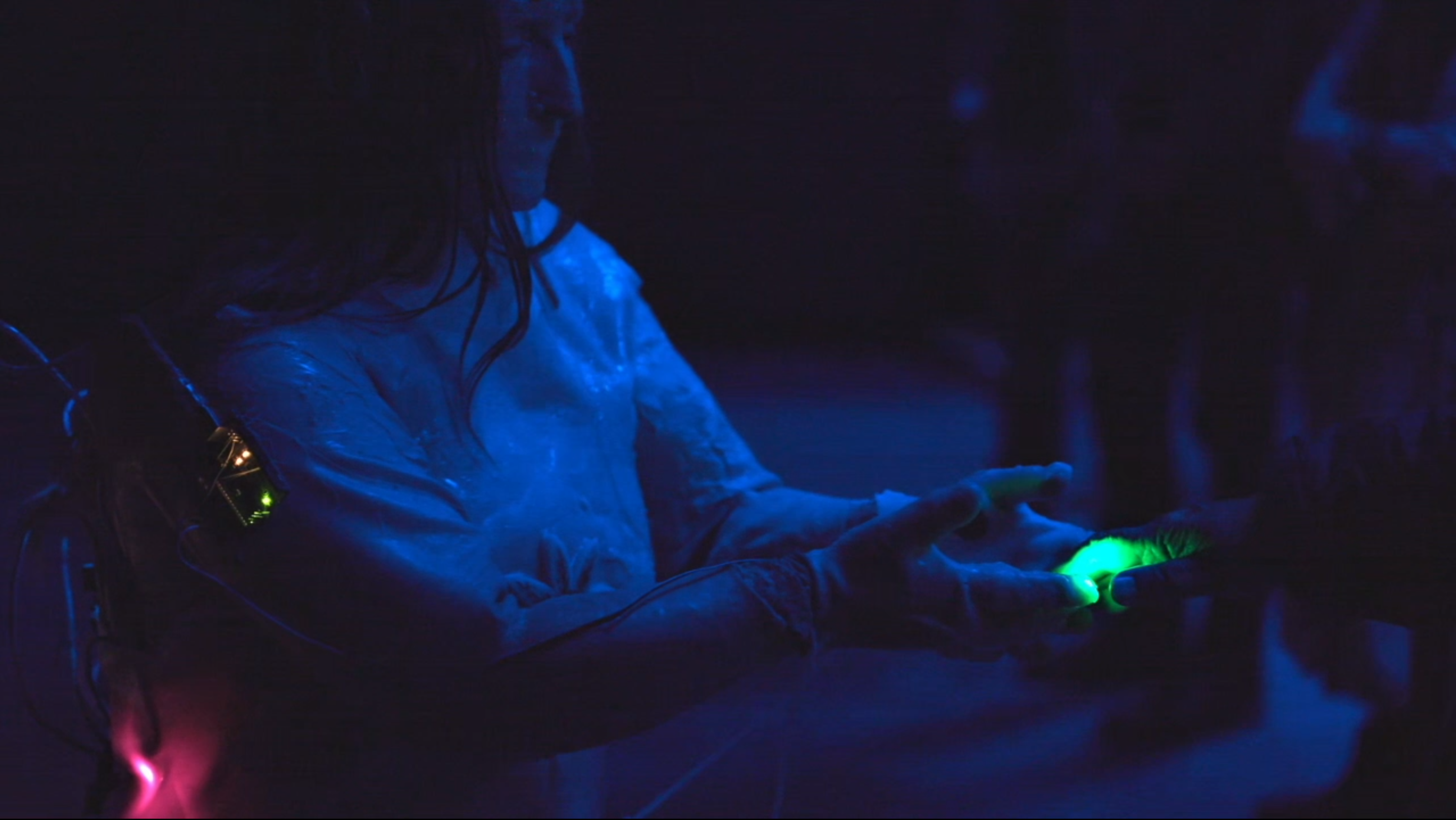EMPATH by FeLT Phd candidate Hege Tapio is currently exhibited in Budapest in the exhibition Alchemy of Knowledge – Transdisciplinary entanglements of Artificial Biology, Robotics, and Art. EMPATH is connected to Hege Tapio´s PhD research with FeLT, Futures of Living Technologies at the Oslo Metropolitan University.
Alchemy of Knowledge – Transdisciplinary Entanglements of Artificial Biology, Robotics, and Art features an exhibition of multimedial works of art, science and engineering, created by the multidisciplinary students of the ABRA (Artificial Biology, Robotics and Art) project.
The exhibition features the collaborative works of the students, faculty and experts who had worked jointly across the fields of science, technology, art, design, and cultures. The exhibition also showcases the methods and practices of higher education that were researched and tested during the ABRA project. These works narrate how we may bridge the art and science for enhanced sustainability and renewal of education.
See more info about the ABRA project: https://www.abra-hub.net/
Location:
AQB Project Space, Budapest, Hungary.
Date:
May 12th – May 26th
Exhibition opening:
May 12th, 2023, 16:00 CET.
More information:
https://www.abra-hub.net/
EMPATH
A true Intelligence, artificial or not, comes from embodied knowledge
EMPATH is a performance where the public is invited to participate in an artistic research project. The performance is produced by Hege Tapio, PhD candidate at FeLT, Futures of Living Technologies research project at the Oslo Metropolitan University. Tapio´s research investigates the possibilites of imagining convergences of machine technology, through and with the human body. Emphasising on the areas which involve emotions, sensing and empathy.
Video: EMPATH is performed and filmed in Maskinhallen at TOU in Stavanger, Norway. May 8th, 2023. Copyright BONO, 2023.
Hege Tapio – EMPATH, True Emotional Intelligence, artificial or not, comes from embodied knowledge
The project is connected with my Phd research and exploreshow we might envision possible and speculative convergences of machine technology and human bodies, with focus on the areas involving emotions, sensing and empathy.
The continuous development towards measuring our biometry is delivering an added layer of digital information that might become a useful and needed feature as we assemble AI with robotic and virtual humanlike entities. As our fascination with artificial intelligence wears off we gradually also might become even more aware of our embodied qualities. Of how our bodies are capable of detecting, perceiving, interpreting and communicating information, a kind of information that is hard to classify in words or intellectual formats. The fleeting feelings, sensations, gut-feelings, emotions….the fabric that both makes us come to aliveness and that weaves us together as social beings.
Inspired by the Cyborg concept, the blending of machine and the human, my artistic project sought out to create an Empath. My interest in the concept of Cyborg has however been to find a narrative looking at how we as humans might differ from machines or how we find ways adapting our bodies to machines. Some of the questions that has been following me through my research is : “why do we want machines with emotions”? and “can a machine ever replicate/simulate human emotions?”
This is where the concept of the Empath comes in, the cultural references of Empaths is of highly sensitive persons that are able to perceive, understand or even share the feelings of another person without direct communication by mouth.
The project has evolved into a performance where a Cyborg figure is approaching the audience. The figure is dressed in a silicone suit with embedded technology making use of EMG signals triggering sound-levels and soft robotics to visualize “sensing organs” or presenting non-human features. Embedded are also hidden sensors that picks up the pulse/heartbeat of the figure, and another sensor that is able to sense the pulse/heartbeat from selected audiences. By inviting in the audience into this slightly uncomfortable environment I am hoping to create some ambivalence between the unsettling atmosphere and the unfamiliar figure that is trying to connect emotionally.

